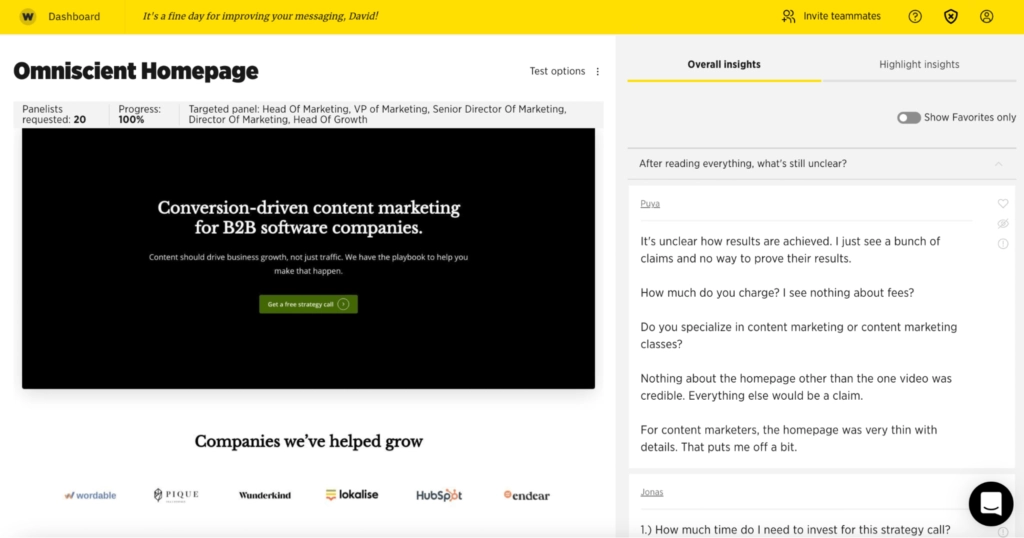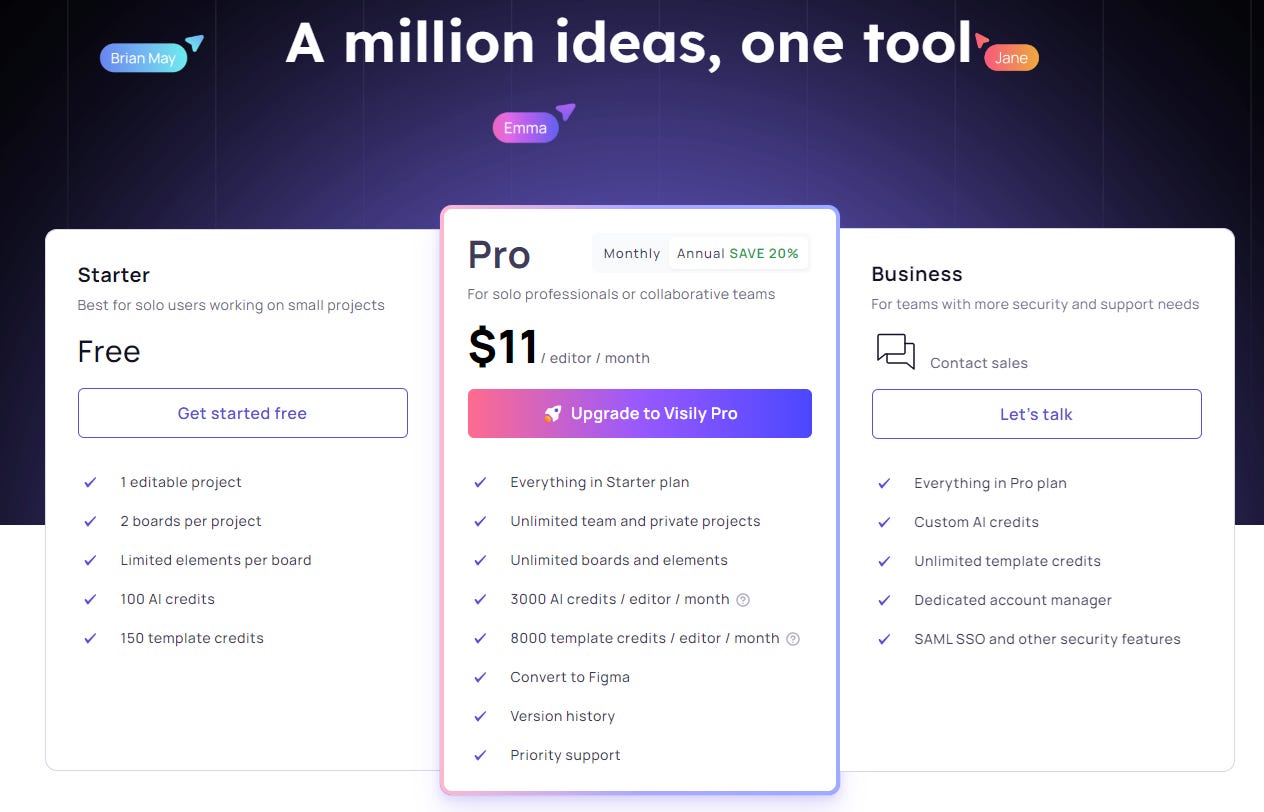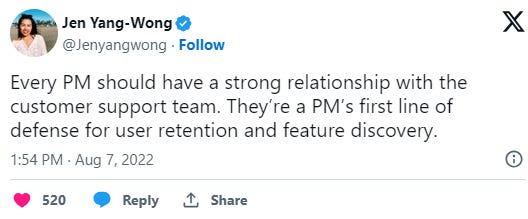15 mistakes PMs & PMMs need to avoid for better product launches
The modern product launch playbook is evolving. PMs & PMMs need to work together to avoid these mistakes that might be undermining their launches.
Do you think this is a hot take?
This might trigger PMMs, but oddly enough, I understand the author's perspective.
Product launches are the culmination of hundreds of hours of engineering, design, product, and research work. Yet, despite the available resources and budget, the return on investment sometimes doesn’t make sense.
You may have pounded out a series of trendy social posts, rolled out a hip demo video, and crafted a few “OMG”-evoking creatives for LinkedIn, yet customers still come back months later saying,
“I had no idea you had that.”
Ouch.
The success of a product launch rests on a myriad of factors that can be hard to control.
So, in today’s edition of Behind Product Lines, we’ll look at what Product Managers & Marketers can do better to improve their launches.
Will these solve all your launch woes? Probably not. But it will give you food for thought.
Here are 15 mistakes to avoid:
1. Validating the solution, but not the messaging with customers.
You might be using sophisticated frameworks like double-diamond to ideate solutions and then, validate them with existing customers.
However, most teams only focus on getting confirmation whether the product solves a pain point. Think user flows, search experiences, design choices, and general capabilities.
However, there’s very little focus on “message validation”.
This is when you share your value propositions with the customer and see whether they resonate with them. For example, show a basic wireframe of the landing page headlines or give them a peek into the sales deck slides.
The “words” they use to describe their problem and the language needed to make them notice are critical from an acquisition standpoint.
Ex: I once botched a product launch when I used the term “dynamic forms” to describe a feature that customers later described as “Oh, you mean skip/hide logic?”.
After all, new prospects will interact with your marketing copy before trying your product.
Some B2B SaaS products use Wynter to get feedback on their website messaging:
2. Packaging the feature into the wrong tier, or worse, no tier at all.
Features come in all shapes and sizes. When you’re building them out, there are models to assess the “value” of the feature in the eyes of the customer.
Factors like frequency of usage, the magnitude of the problem being solved, the cost of operating it, etc., contribute to assigning a price for the feature.
But in the effort to meet launch deadlines, this analysis is sidelined, and the feature is slotted in any “seemingly meaningful” tier.
This can lead to adoption problems.
If you put it in a higher tier than it should be, you end up exposing it to a smaller pool of users. You lose out on bolstering your lower tiers and protecting them from churn.
If you put it in a lower tier than it should be, you lose out on giving reasons for customers to upgrade.
Take Visily’s packaging for example.
If the ability to “Convert to Figma” were given in the starter package, they would experience a drop in free-to-paid conversion rates. Similarly, if they failed to give any AI credits in the free tier, they’d lose out on showcasing a competitive differentiator.
3. Forgetting to price the feature appropriately
Related to point 2, arriving at the right pricing model is essential.
This is especially true when the feature is built as a standalone add-on that can be purchased separately, e.g., Notion AI.
When I say pricing model, I’m referring to multiple components:
access type (usage-based pricing, monthly subscription, a la carte)
price point (the actual cost)
I like referencing JustCall’s (cloud-based phone system) case study on pricing when considering this aspect.
JustCall initially adopted a per-user, per-month pricing model based on four variables: number of phone numbers, team members, integrations, and final price.
Despite offering competitive rates, this structure created confusion and anxiety among customers, who struggled to predict costs and allocate budgets effectively.
“Is this a $100 investment? Or does it have hidden variables to approach > $1000?”
The complexity of computing multiple variables deterred potential clients, leading to issues with customer acquisition.
What did JustCall do?
First, they cut the per-user pricing. They then simplified plan selection, introduced range-bound pricing to accommodate customers' budgetary constraints, and created bundled offerings.
This alleviated customer concerns, and acquisitions started ballooning.
Point is: this is meant to be a pre-launch activity.
Pricing models matter in a launch, especially for significant features.
4. The entire content plan focuses on how the product works.
Yes, users need to know how to use a feature. The knowledge base articles and video demos help. However, before the “how,” they need to get answers to “what” and “why.”
Product teams struggle to develop digestible content that generates demand for the category of problems they’re trying to solve.
Content that talks about:
What is the problem at hand?
What use cases are we talking about?
Why does this problem matter?
What happens if it remains unresolved?
Who does it pertain to?
The old way vs. the new way
A product that educates well at a use case + feature level is Sparktoro. Rand Fishkin’s video demos and whiteboard sessions are so on point:
Rand Fishkin does a great job of painting a scenario that marketers struggle with and then naturally weaving in how Sparktoro can help resolve that problem. This is different from discussing features, specs, and capabilities in a vacuum.
Verbalize the persona, the situation, the scenario.
5. Lack of alignment between PMs and PMMs
Too often, Product Managers and Product Marketers work sequentially when it comes to launches.
The PM works on a release with the engineering team for weeks before a hasty “hand-off” takes place. Product Marketers are ushered in and then rushed to make noise.
When PMs and PMMs work in this fashion, 6 things can go wrong:
PMMs are unable to articulate the right story and use case
There’s no shared understanding around pricing and packaging
PMMs don’t understand capabilities well and might over-sell them
PMMs are unable to identify how the feature is better than the competition
PMMs aren’t sure who the feature is really for
PMs and PMMs are at odds on timelines and future roadmap.
Instead, PMs and PMMs must work in lockstep throughout the build cycle to ensure a meaningful go-to-market plan is fleshed out.
To read more on how to create this alignment, check out this edition:
6. Forgetting to set leading and lagging launch metrics
You’d be surprised how many product teams launch without launch KPIs.
If they do, they are usually in the form of feature adoption goals. In some cases, success is measured purely by lagging indicators like revenue.
While these metrics carry value, the “quality of a launch” needs to be measured with more granular leading metrics that measure awareness creation and how many customers were motivated to explore the feature.
Thus, metrics like:
watch the rate of a product demo
utilization of a sales enablement collateral
the open rate of an email campaign (by the way, tracking open rates might be in jeopardy based on Google’s latest shenanigans)
volume of mentions of the feature in sales conversations (using a tool like Sybill)
number of impressions served by the in-app notification
…are equally important (and not vanity metrics as most think) as that’s the first step towards adoption.
Without setting these metrics, product teams are unsure of what, where, and when to iterate and improve launch levers.
[Sidenote]
Teams also run into a problem with attribution regarding lagging indicators.
“How do we know this change in revenue or retention was influenced by this feature and not by tailwinds or other factors?”
In my experience, there’s a point where over-obsessing about attribution has diminishing returns. Sometimes, a directional lift in key metrics suffices.
7. Neglecting to adjust the launch intensity based on the value of the feature
Every feature isn’t the same.
Thus, every feature demands a different go-to-market push.
For example, if you’re building recruitment software, a new resume research filter isn’t the same as a conversational AI chatbot that recommends candidates. Both deserve a distinct go-to-market and different intensity of activities.
The AI chatbot might deserve its landing page, a press release, and perhaps even an educational webinar. The CEO might also attend events and podcasts to discuss it.
The search filter, on the other hand, might get a tooltip on the search interface.
Yet, novice product marketers use the same soul-less checklist for every launch.
It’s important to size the launch based on the feature’s customer and business value and then pick a tier that best suits it.
8. Creating hype temporarily and then going silent
A launch is only the first milestone of a go-to-market strategy.
But it’s common for marketing teams to create hype about a feature release for a brief period before moving on to the next item in the queue.
While constantly promoting every feature is impractical and unnecessary, key differentiators need a structured plan over a longer period of time.
This means scheduling campaigns over the course of a quarter, creating demand gen content at regular intervals, and, in some cases, waiting for a few enhancements to hit production to do a minor re-launch.
Not every customer is tuned it to a product’s communications all the time, so you need to create more coverage and extend your airtime.
Some marketing units are afraid to repeat themselves. If content creation has taught me anything, it’s that reposting past content works as new audiences get a chance to consume it.
But the hard part is balancing this with point 14, which is coming later.
9. Rolling out major features to all customers; not opting for launch phasing
When working on a major launch, PMMs and PMs must agree on a rollout strategy. This means one doesn’t need to launch a feature to ALL customers.
Moreover, a segmented rollout can be beneficial as you get a chance to collect feedback, iterate on the product, and then roll it out to a wider group with a more refined version, setting it up for more success.
There are several rollout strategies available:
geo-fenced (users in a specific country see the new feature)
opt-in beta (users have to opt-in with consent to use the beta version)
A/B rollout (two groups of users see different versions of the feature)
11. Forgetting to account for the first-user experience
As a PM mentally invests themselves in a new feature, it’s easy to forget the experience fresh new users would be getting.
Sometimes, the rollout of the new feature is pushed so hard (think annoying pop-ups) that a relatively new adopter might feel overwhelmed and bewildered.
On the other hand, new users who register after a feature's initial launch may miss out on necessary context or might not naturally discover it.
Of course, every feature doesn’t need to be positioned for new cohorts.
However, PMMs should work with PMs to determine a significant feature that deserves inclusion in the onboarding checklist, product tours, and welcome email series.
12. Leadership failing to back and promote the launch publicly
It’s no secret that brand accounts on LinkedIn are struggling to get as many organic impressions as personal accounts.
Social media gurus keep echoing an oft-quoted adage: “People trust people, not brands.” Who better to represent and advocate for a brand than the leadership themselves?
The era of delegating online presence to social media teams is quickly fading away.
Now, it’s time for company ambassadors to promote the product, create thought-provoking content, and engage with customers.
But it’s easy to get this wrong. Most leaders think posting ChatGPT junk will do the trick. No.
Content posted by senior leadership needs to carry a unique point-of-view with a clear “villain” (i.e. the status quo or undesirable alternative they are waging war against). And yes - they need to do it on a consistent basis.
Moreover, “reactions” are the wrong KPI to celebrate. You need to care a lot more about comments and DMs from ICP-fit personnel.
Some examples of strong leaders evangelizing their products well are Adam Robinson, Peep Laja, and Rand Fishkin.
13. Handing collateral to sales, but not getting them pitch-ready
While consulting a product company, I asked them about their sales enablement process.
They showed me a beautiful 30-slide deck with structured narratives and in-depth competitive market analysis. I was genuinely impressed.
I remarked, “This is stellar. Sales must love this.”
They said, “Umm, not really. Sales hardly read these decks. They don’t have time.”
In other words, the enablement playbook is changing.
I’ve seen PMMs just hand sales a whole kit of resources in the hopes they’ll devour it and regurgitate it verbatim in a sales call. That rarely ever happens. Sales is a busy unit, and if you hand them homework, it’ll be lower on their priority list.
I’m not saying sales enablement collateral isn’t essential. It just needs to be far more practical than handing off thick literature.
For example, here’s a neat 2-pager from Atlassian - much more digestible and to-the-point:
The REAL goal is to convince sales that the product or feature will give them the necessary arsenal to win more deals and attain quota. Tie it with incentives that they care about.
A sample enablement process could be:
PMMs give an internal workshop on the feature to sales.
PMMs hand them a 2-pager explainer doc.
Every sales rep sends in 2-minute Loom videos with their pitch.
The top 2 are selected, rewarded, and set as the benchmark pitch.
14. Mistiming the launch & overlaunching
Launching at the wrong time can significantly impact a product's success.
No, I’m not talking about launching over a weekend or holiday.
The more common trap is “overlaunching,” which involves overwhelming users with a constant hype train and a stream of back-to-back launches.
With all the chaos customers have to bear at work, they have a limited mental capacity to learn about our product before they zone out. Thus, lining up multiple mini-launches a week is overkill.
Thus, product teams must be skilled at combining, delaying, and throttle down a launch based on the circumstances.
This is why, besides the “feature roadmap,” it’s useful to maintain a go-to-market timeline to ensure users aren’t shocked by a tidal wave of updates.
15. Launching when support is woefully unprepared
Never assume customers won’t have questions when they start using the product.
I’ve seen PMs and PMMs do a splendid job aligning sales, marketing, and customer success but forget to bring customer support up to speed.
The symptoms are apparent when training is overlooked:
agents keep passing tickets to others
resolution times balloon
customers get conflicting answers (this happens a lot)
I suggest always having support attend internal workshops and getting a hold of Loom pitches. They need to understand both the “how” and “why” to guide customers. At the very least, they should be “aware” of what’s launched. Don’t assume they are glued to your launch announcements on Slack.
It’s hard to always pre-plan every troubleshooting scenario, but there needs to be an open line between product teams and support to keep making improvements.
Updating help docs and knowledge base articles is a must. Most customers will first Google “product name + (feature name)” to get quick help.
Bonus: Overlooking localization needs
A hard thing about running a truly global product is to think “regionally”.
Sure, every product tends to have its “hotspot” regions where it gets the most traction. But if these regions aren’t homogenous in all their needs, the messaging and product experience need to adapt.
For example, at my company, vFairs (event tech), we learned over time that our UK-facing pages need to discuss GDPR a bit more. Moreover, we serve audiences in Saudi Arabia who need Arabic support and multi-lingual capabilities. When it comes to running webinars in China, we needed different vendors/partners to keep services live.
Moreover, our research unveiled that many event attendees struggled to pay for tickets using Stripe/PayPal. This insight led us to launch a region-based payment marketplace.
Thus, a good practice before a feature launch is to check whether there are regional nuances you need to address.
The Grand Finale
Product launches are difficult to get right because they involve intense competition for attention.
Marketing teams spend many hours planning campaigns, but often see little ROI when they survey a customer base's capability awareness of a product or see little impact on MQL volume.
Sure, the goal may not be to make every customer a product expert, but the word needs to reach the right people in need at the right time.
Hopefully, some of the pointers in this article may help offset that challenge.
Till next time,
Aatir
















I subscribed because I love this image and I was blown away by how good your newsletter is so just subscribed! Would you mind sharing what pixel ratio you are using for your images? I have been struggling to figure out which aspect ratios to use and yours are fabulous.